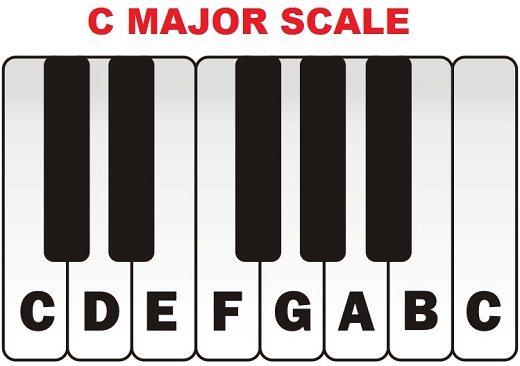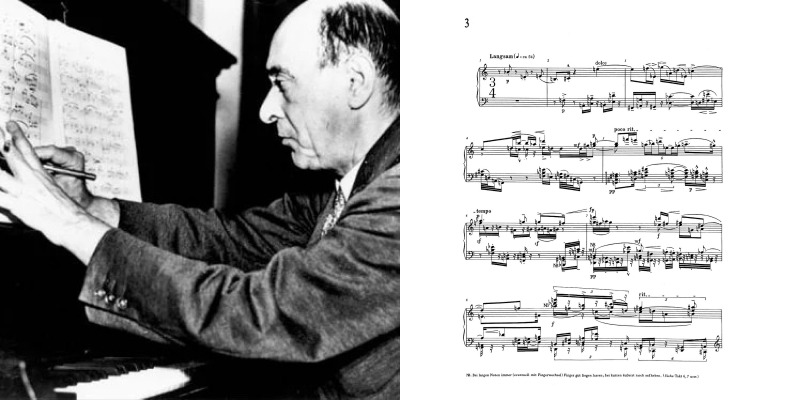TWIN Articles
 By Jeffrey Ernstoff, TWIN Creative Director
02.27.2022
Jeffrey Ernstoff
By Jeffrey Ernstoff, TWIN Creative Director
02.27.2022
Jeffrey Ernstoff
 By TWIN Global
09.08.2021
To Develop a Startup Mentality, the Customer is Key
By TWIN Global
09.08.2021
To Develop a Startup Mentality, the Customer is Key
 By TWIN Global
05.04.2021
The Great Unwinding Of 2021: Six Questions To Prosper Through Reopening
By TWIN Global
05.04.2021
The Great Unwinding Of 2021: Six Questions To Prosper Through Reopening
 By TWIN Global
05.31.2020
SpaceX’s Launch, Campaign 2020, Social Media & The Future Of Truth
By TWIN Global
05.31.2020
SpaceX’s Launch, Campaign 2020, Social Media & The Future Of Truth
 By TWIN Global
10.11.2019
TWIN GLOBAL: Jesus Mantas
By TWIN Global
10.11.2019
TWIN GLOBAL: Jesus Mantas
 By TWIN Global
10.11.2019
TWIN GLOBAL: Ravin Jesuthasan
By TWIN Global
10.11.2019
TWIN GLOBAL: Ravin Jesuthasan
 By TWIN Global
10.11.2019
TWIN Origins: ANNA CATALANO
By TWIN Global
10.11.2019
TWIN Origins: ANNA CATALANO








Welcome everyone. To build upon TWIN Global’s recent program themed upon the idea of “beyond,” I thought it might be fun and interesting to offer a brief look and listen to something that took music “beyond,” consider its implications, and ask why we should care. I’m referring to the musical movement known as serialism. In terms of innovation, it was so revolutionary in its era – the 1920s into the 1930s – that one of its leading composers gave a series of salon talks to help people understand how and why this new music came to be and why it was envisioned as the future of composition. These 6 salon talks given by the great composer Anton Webern were eventually published under the title: The Path To New Music and are well worth checking out for folks with at least basic musical training. This simplified article for TWIN takes its cue from that.
The rules of serialism get very complex very quickly, but for our purposes as innovators it’s the basic concept that’s important. To get that across I’ve opted for several glaring simplifications, omissions and approximate analogies; when I use phrases such as “it’s sort of like” it’s in favor of imparting the gist. Mea Culpa.
The Basics

No doubt most of you received some musical training somewhere along the line, probably in childhood. That acquainted you with the major scale: do, re, mi, fa, sol, la, ti, and (upper) do. On the piano the easiest way to see and hear the major scale is by playing only the white notes in this ascending order: C (do), D (re), E (mi), F (fa), G (sol), A (la), B (ti), C (do). (Please note: There are minor scales as well.) Regardless, whether in major or minor scales using these tones – which engender what we call “tonal” music – 1 note naturally resonates as the primary one and all the other notes are heard in relation to it. We call that note the Tonic, or do. Here’s a sort of analogy: On a baseball diamond, Home Plate is the tonic (do); 1st, 2nd, and 3rd base are viewed and so named in relation to it. In tonal music you can naturally hear that when you sing do, re, mi, fa, sol, la, ti, do – upwards or downwards – the lowest and the highest ‘do’s sound like “home”.
Indeed – when all the other notes are compared to the lower do, the higher do is by far the one that sounds most like it. Why is that? It’s because the higher do is vibrating at exactly twice the frequency of the lower do, and that’s what reinforces the lower do. In this setting, tonic (do) is everything. Your ears have been rooted in tonic literally since the day you were born; almost every lullaby is a perfect example. We end a song with the lower or higher tonic about 99% of the time and you can instinctively sense that ending on the tonic imparts feelings of stability and closure.
 At this point, we need to acknowledge the eventual insertion of an additional 5 notes in the sort of cracks between the 8 notes of do, re, mi, fa, sol, la, ti, and do. These notes are C-sharp, D-sharp, F-sharp, G-sharp, and A-sharp. Inserting/adding these 5 additional notes gives us what we call the chromatic scale of 12 equidistant notes between the lower and higher ‘do’s. The upper and lower ‘do’s still rule and are home base, but now there are 12 different notes between them instead of just the 7 different notes of do, re, mi, fa, sol, la, and ti. Otherwise put, the insertion of these additional 5 notes mathematically enables us to have any of those 12 chromatic tones serve as the tonic of its own do, re, mi scale. You already know this if you play an instrument.
At this point, we need to acknowledge the eventual insertion of an additional 5 notes in the sort of cracks between the 8 notes of do, re, mi, fa, sol, la, ti, and do. These notes are C-sharp, D-sharp, F-sharp, G-sharp, and A-sharp. Inserting/adding these 5 additional notes gives us what we call the chromatic scale of 12 equidistant notes between the lower and higher ‘do’s. The upper and lower ‘do’s still rule and are home base, but now there are 12 different notes between them instead of just the 7 different notes of do, re, mi, fa, sol, la, and ti. Otherwise put, the insertion of these additional 5 notes mathematically enables us to have any of those 12 chromatic tones serve as the tonic of its own do, re, mi scale. You already know this if you play an instrument.Serialism: A passport to the musical beyond
To achieve that effect and aesthetic, the governing rule in serialism is that the music must begin with what’s called a 12- tone “tone row.” That rule demands that, starting with any of the 12 chromatic notes – in any order – each of the 12 chromatic notes must sound once before any of them can be used again; ergo – the “tone row” is a series of notes – hence the term serialism. The development of the rest of a serial piece is sort of bound by permutations of the same rule. Here are four examples of a tone row, remembering that in each case no single note in the series can be repeated until all 12 different notes have been heard first. Here are four examples of twelve-tone rows.

You might sort of liken it to the form of poetry known as haiku. When writing a haiku – it must have exactly 3 lines: The first line must have exactly 5 syllables, the second line must have exactly 7 syllables, and the third line must have exactly 5 syllables. No exceptions.
In short, serialist composers embraced the idea that they had found a new approach tantamount to a passport to the musical beyond.
“A sunset mistaken for a dawn”
Listen to as much as you like to get the idea.


Leaving out a host of developments, let’s fast forward to 1934, when serialism had already evolved to the point at which composers including Webern had gone beyond that with pieces that extended the same serialist approach to compositions for several instruments. Listen to as much as you like to get the idea.
Hopefully you’ll find at least a smidgen of serialism that strikes you as beautiful. (With sufficient exposure to this kind of music, many folks do.) A recommendation: If you want to enjoy and be able to deem one piece of serialism superior to another, you’ve first got to get to the point at which serialism is no longer foreign to your ears. It takes some getting used to, but then you can really appreciate its masters and/or pick your favorites. On a side note, when I was studying music in grad school, my mother would hear stuff like that and protest “That’s not music.” (However, in the spirit of full disclosure, she also protested my dating Leslie Zak. But I digress…)
Serialism’s tone rows whose 12 notes are heard only in relation to one another result in a more or less “abstract” music because, as in any work of abstract art, all of its elements – notes, shapes, colors, etc. – refer only to themselves. In the visual arts, think of the lines, shapes and colors of a Diebenkorn painting. Contrast that with tonal music: as you can hear in the tonal “Doe, a Deer,” we have repetition of do and mi several times before even getting to fa, sol, la, and ti. For composers who felt that tonality had had its run, serialism seemed the logical way to go, and therein lies the problem. In the arts, going beyond is rarely purely logical. Nonetheless, as serialism was deemed to be the inevitable future of Western music, Webern felt obliged to explicate this evolution from Bach to Serialism, and that’s why he gave the 6 Path To New Music salon talks I mentioned earlier.
Although many composers and listeners embraced serialism, the majority of the general public ultimately rejected it as dissonant, rootless and even disturbing. For most listeners, serialism has been largely abandoned as a sort of experiment gone wrong because it runs counter to what seems to be our innate resonance with and need for the tonic. If you listen to the radio today or review the programming season of any major orchestra, you’ll almost never hear any serialist music. To loosely borrow from a phrase by Debussy, many musicologists would maintain that serialism was “a sunset mistaken for a dawn”.
Home, sweet home
Why are people all around the world wired to resonate with tonal music? It’s due to many properties in physics, overtones and more, to which a mountain of research and evidence attest in the field known as psychoacoustics.
Why should TWINians care? First off, in business, we can briefly note how people in advertising and marketing exploit that. The 3-note NBC musical logo ends on the tonic and is framed by it. That imparts a very powerful feeling of stability and comforting closure. Even amidst often horrifying news coverage and violence in TV dramas and so on, the interspersed NBC musical logo in the commercial breaks and station identifications tells you that no matter what- through NBC – all’s right with the world, that you’re grounded, and that you can implicitly trust them. In all kinds of musical logos, TV theme songs and so on, marketing never fails to capitalize on this; it’s a given in their efforts.
All that said, we can take a cue from Marcus Aurelias who said, “For any particular thing, ask what is it in itself? What is its nature?” And so we ask: What is serialism? What is its nature? As I mentioned earlier, think of the answer as a sort of musical dialectic:
Thesis: There is a non-intellectually derived tonal music that is organized around the natural psychoacoustic phenomena of Tonic.
Antithesis: There is an intellectually derived, strict-rule serialist music that disregards the natural psychoacoustic phenomena of Tonic.
Synthesis: In serialism, the concept and its strict rules transform tonic into an intellectual entity – an idea in itself.
Of course, understanding serialism also requires social context; by the 1920s, Einstein’s proven theories were affecting everything by postulating that everything is relative, or, as in today’s parlance: “it all depends on where you’re coming from.” In addition, after WWI there was an even deeper reverence for democracy. In that context, we note that in serialism, no one note seems to be more important than the other. There’s a conceptual democratic equality in the importance of all 12 tones.
In the broadest sense, when we fail to consider the zeitgeist of the time, we often tend to think of what goes “beyond” as anomalies that pop up out of romanticized “pure imagination”. Even though there is a song with that title, there is no such thing as pure imagination. Yes, the human mind demonstrates a capacity for envisioning (or in this case -hearing) something that does not yet exist – but whatever it imagines is informed by some form of experience. Da Vinci imagined flying machines, but Da Vinci had already seen birds in flight and the successful inventions of other machines. His imaginings were informed by his many experiences of the world. We are what we eat.
Although great enthusiasm for serialism was short-lived for all but a few composers and listeners, it made us examine, accept and reinforce what in musical terms makes us tick – what’s in our musical DNA. A key strand in that DNA, among other strands such as our reactions to other musical fundamental elements including timbre, harmony, and such – is our resonance with tonic. Why should we care? First off, in business, it enables us to seize upon opportunities in terms of marketing and advertising beyond music. For example: What is it that makes the fun, playful “anything goes”, almost random Geico ads successful? Could it be that it’s because taken together, they have a reinforced tonic which in this case is humor?
Second, when art fails because it’s contrary to human nature, there’s still much to be learned from it about human nature, and there are many psychologists and sociologists who’d maintain that rejection of serialism confirms something about the need of all humanity to have a strong sense of a home base in art, even if we have to redefine it. Of course we’ve known that for millennia – but in many cases only on a superficial level. We care because that justifies important research in psychoacoustics that improves upon therapeutic healing powers of art therapy for a host of infirmities including PTSD for our veterans and first responders.
Third, when considering sponsorship of innovation in the arts whether as individuals, corporations or non-profits, the example of serialism can help illuminate what kind of thinking is truly beyond, even if it is relatively short-lived.
And by extension, such research can point the way to deeper enlightenment of our nature in fields other than music. Of course that’s not a new idea and it applies to even the most basic concept of beyond. In the final analysis, perhaps serialism’s greatest value is that it furthered myriad considerations of what lies at the core of our innate sensibilities and the degrees to which we can run against the grain. That’s why we care.
